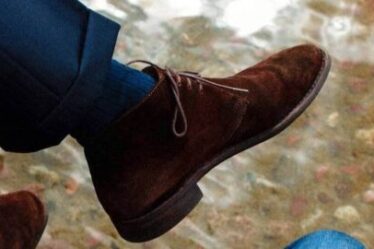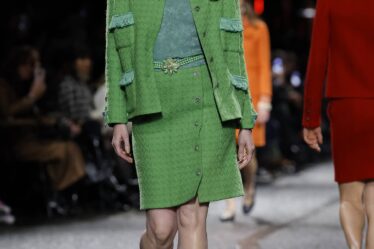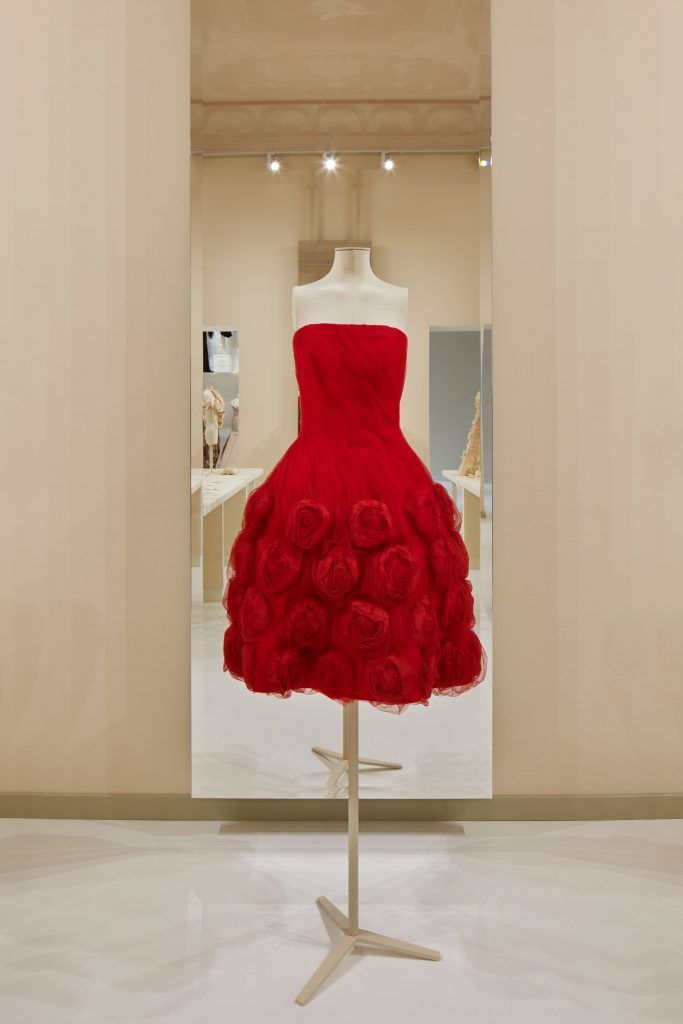
To celebrate Valentino’s illustrious haute couture and the 90th anniversary of its founder, creative director Pierpaolo Picioli has staged an exhibition with Qatar Creates and Qatar Museums. He walks us through the show, talks about his couture ideals and explains why it isn’t a “retrospective”.
1959 marked the birth of a new era in fashion. When a structured sleeveless tulle midi dress, dubbed Fiesta and adorned with sculpted roses, walked down the halls of an intimate atelier in Rome, it was clear the established hierarchy of fashion monarchs had acquired a new member – Valentino Garavani. Today the house’s legacy, which has stretched over more than six decades, is still unfolding.
“My mind goes to the Fiesta dress, from 1959 Valentino Garavani’s first collection,” the brand’s creative director Pierpaolo Piccioli tells me of his favourite couture dress. “Not only is it a majestic piece of work, but it embodies a love for couture and a passion for graceful details. Being the first of many important pieces, Fiesta has all the spontaneity of the beginning, it opens the path to a wonderful story.”
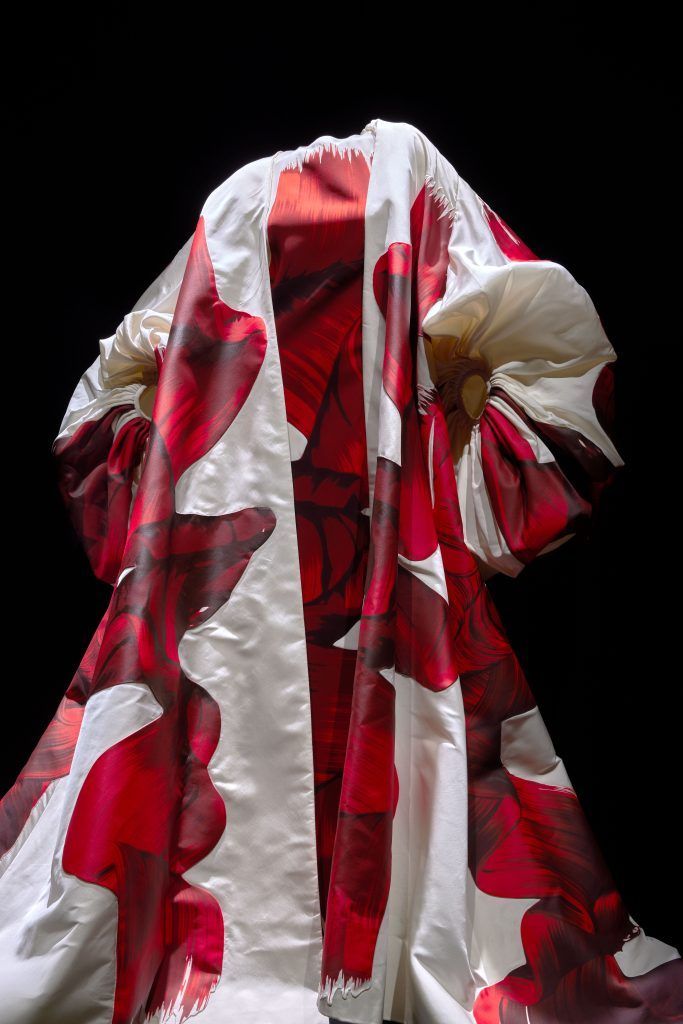
Fiesta marked the first time Valentino Red became the staunch symbol of the house, as well as the beginning of a long tradition of including at least one piece in the colour in each of its shows. Those not fluent in fashion history might recognise Fiesta as a piece worn by Jennifer Aniston in 2004 to the premiere of Along Came Polly.
To celebrate its founder’s 90th birthday, the house is staging the Forever Valentino exhibition at M7, Msheireb Downtown Doha in Qatar, which is open to the public until April 1. In sections themed Palazzo, Beginnings, Des Ateliers, Capriccio Romano, Di.Vas, Parade, Wunderkammer, Archaeologies, Cahiers de Defile and Roman Conversations, more than 200 haute couture and prêt-à-porter pieces occupy 10 of the museum’s rooms. “It’s an open dialogue between Mr Valentino and me,” says Piccioli. “I feel the need to share this evolutive process and highlight some stable key points once they’ve reached their highest result.”
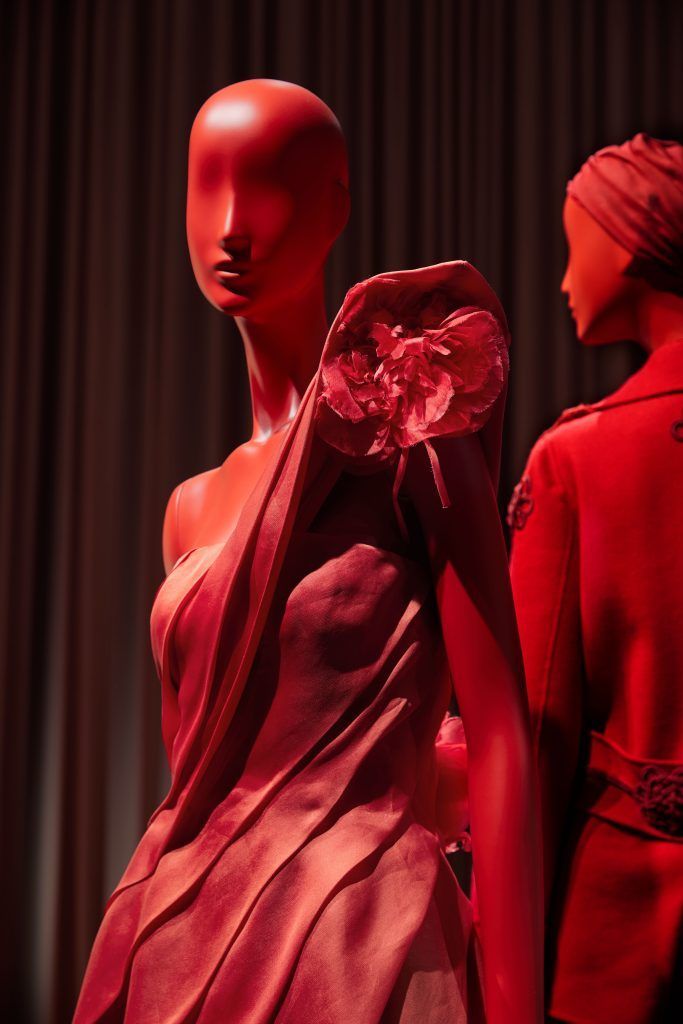
We start at Palazzo – a temple of worship – where the signature Valentino Red is placed on the pedestal, with coveted crimson couture creations from the maison’s archives displayed on steps not unlike those inside a coliseum. There’s the dress from the spring/summer 1981 haute couture collection that Brooke Shields wore on the pages of Vogue, alongside Piccioli’s ruffled gown from the spring/summer 2018 haute couture show, which was worn by Anne Hathaway to the 2018 Met Gala.
Beginnings takes the form of a cosy atelier dressed in ivory with two crimson accents that connect the house’s roots with its modern influence – the Fiesta dress and its newest interpretation that opened the autumn 2022 couture show. This is the room where the exhibition’s intentions are most clearly manifested.
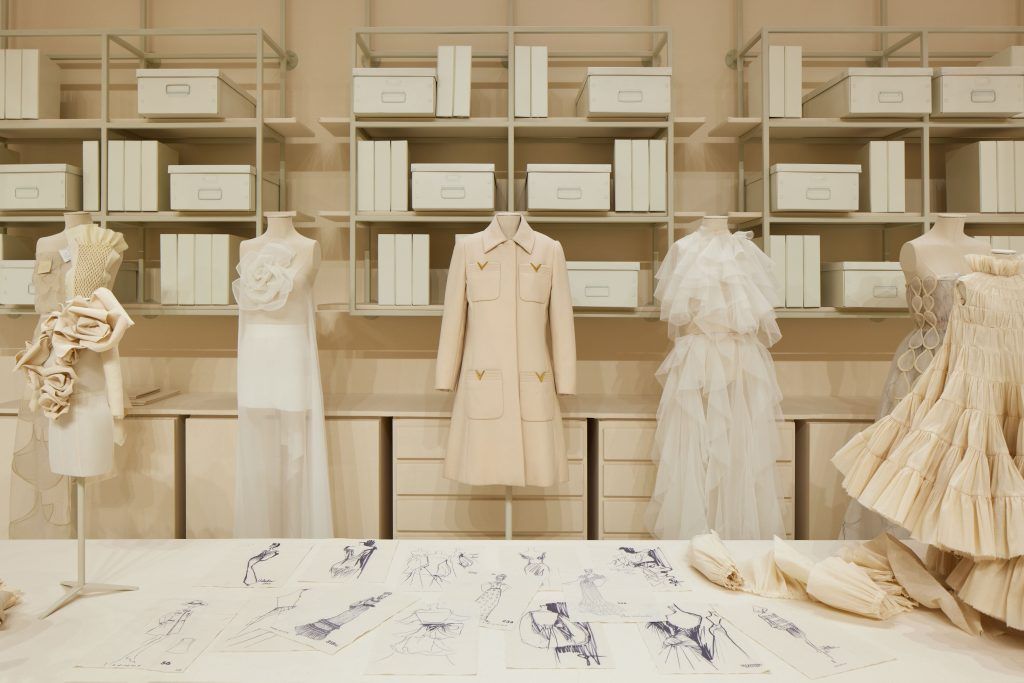
“I used the term perspective in contrast with the retrospective, which would have suggested a historic and only past- driven approach,” says Piccioli. “It looks forwards to the future. I do believe the values and the extraordinary mastery of Mr Valentino Garavani are still relevant and meaningful.”
In Di.Vas, Valentino’s muses take centre stage. The pastel-pink feather dress Lady Gaga wore to the Venice Film Festival in 2018 stands alongside Elizabeth Taylor’s ivory gown trimmed with plumes from the Spartacus premiere in 1960, together with Zendaya’s neon-yellow, midriff-baring outfit from the 2021 Oscars. Photos of Valentino divas on red carpets, at parties and in campaigns are displayed on the room’s walls.
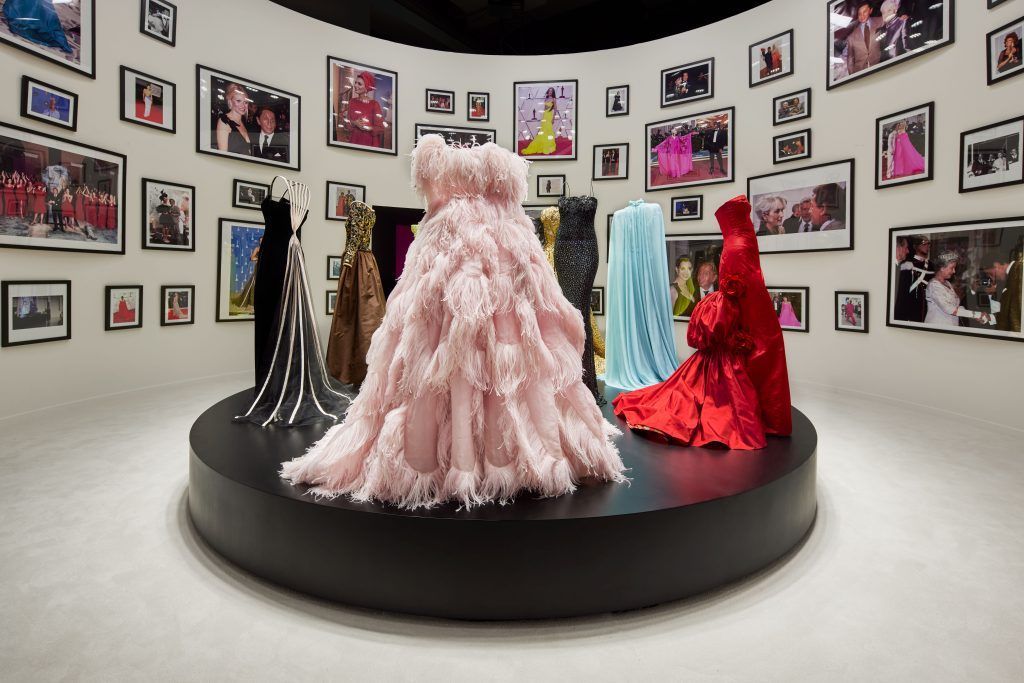
Juxtaposed with the light-drowned Di.Vas and Beginnings is the dim Cahiers de Defile, which spotlights notebooks outlining the inspiration for Valentino couture shows. One offers a peek behind the curtain at the autumn/winter 2019-2020 haute couture collection that, in some ways reimagined Cecil Beaton’s images of Charles James dresses through a modern, inclusive lens. Another highlights the spring 2020 couture collection, placed right in front of the black gown with a pink-tulle bubble blouse that opened the show. A mint-green suit from the house’s autumn/ winter 2021 couture collection exemplifies Piccioli’s enlightened approach to haute couture ideals.
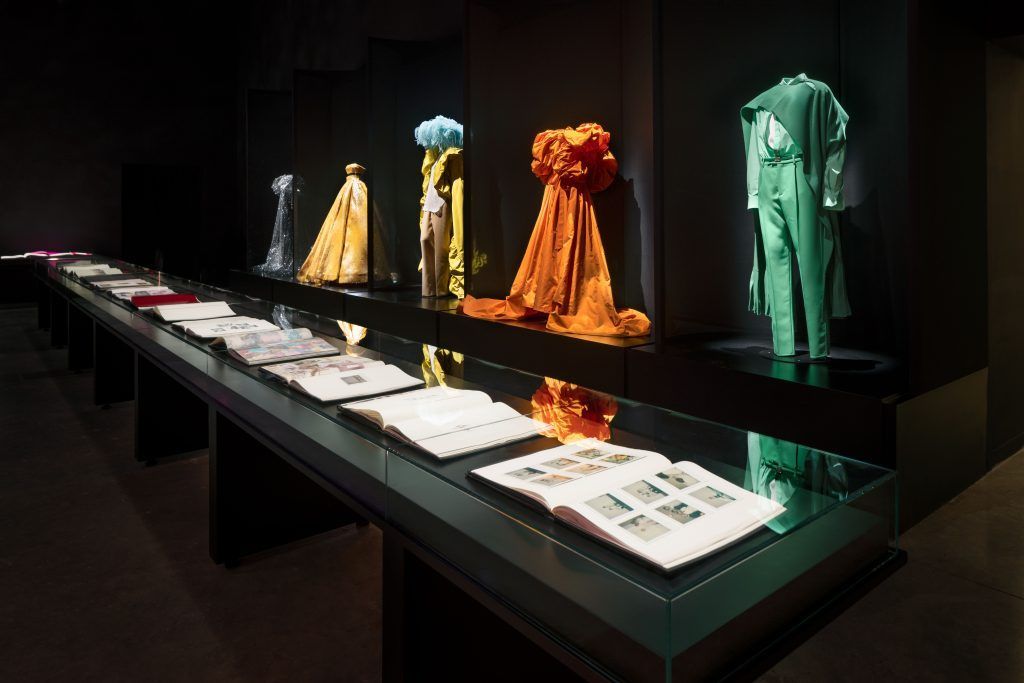
“I couldn’t have imagined a fashion house that didn’t include all genres,” he says. “There’s not a ‘men’s couture’ or a ‘women’s couture.’ It’s just couture. The rituals and the process of haute couture are an exaltation of the human being – they’re timeless. And this non-belonging to time made me think that gender shouldn’t be a limitation but an added value.”
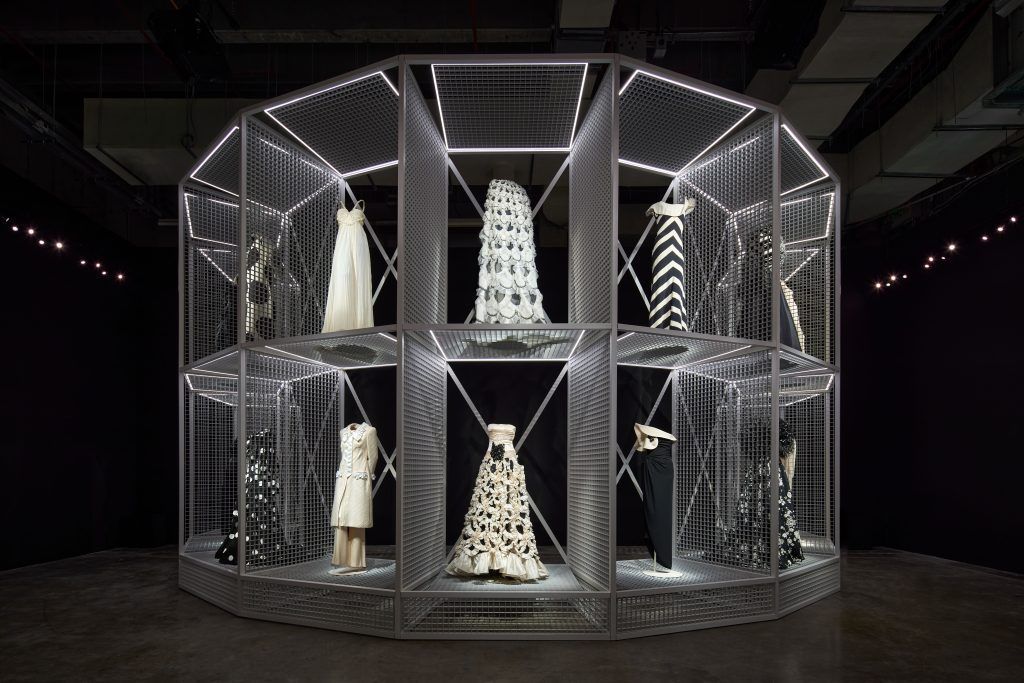
Entering the stern, kaleidoscopically symmetric Capriccio Romano, you might feel as if you’d been transported into a futuristic and almost fantastical bridal parlour. Here, a pair of grand, two-level structures – each, again, resembling a coliseum, one with the characteristic arches and the other with squared neon-framed windows – house magnificent gowns in black and white. You can spot the black silk dress strewn with white flowers and crowned with a voluminous tulle bustier worn by supermodel Adut Akech to the 2019 Met Gala, alongside the polka-dot- ridden chiffon gown from the spring/ summer 2020 couture collection. On each side, the coliseums are guarded by the solemn giants picked from Valentino’s autumn/winter 2020 couture show – the maison’s most bewildering bridal collection yet. Entitled The Performance: Of Grace and Light, the show featured 16 dresses of at least three metres long worn by models poised in the air; now on view are three wedding gowns from the line.
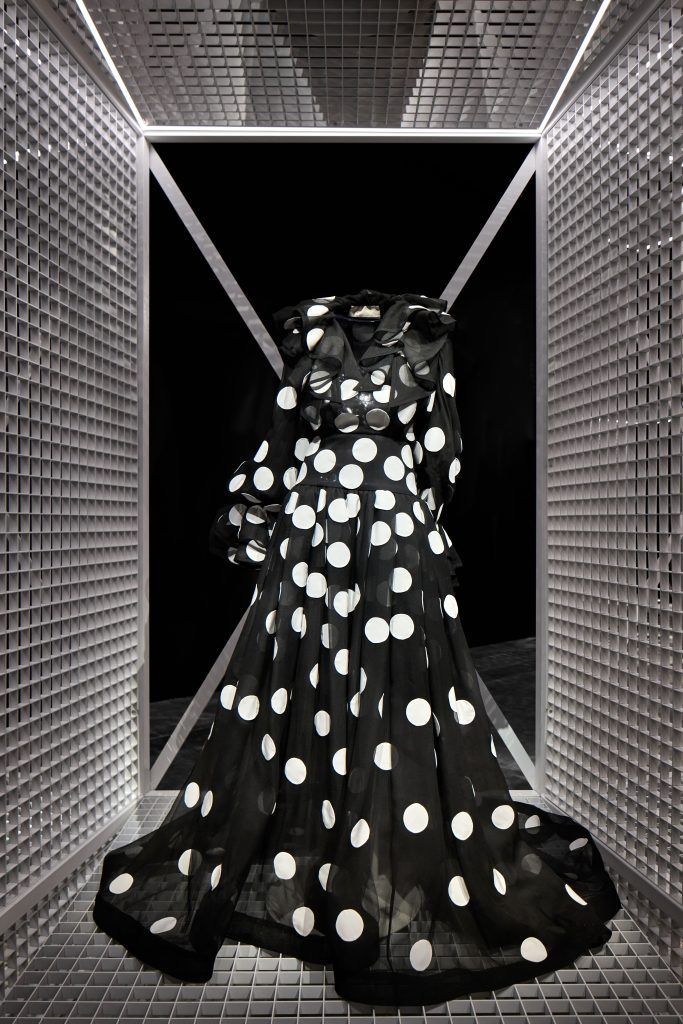
While acting as a stimulus to the exploration of the house’s enduring legacy, Forever Valentino is also a testament to the ingenuity that drives couture excellence. “The Valentino I like and work for is also an open lab, where diverse forms of creativity are always welcomed,” says Piccioli. And what better way of grasping Piccioli’s demiurgic paradigm than to step into the space humbly titled Des Ateliers? Here, in a setting that’s almost academic, the maison’s heirlooms are deconstructed to illustrate their unique technical complexity. One notable piece here is a white gown made in 1993, on which thin coils of silk are looped over wool and stitched together to form a sculptural bodice with the structural integrity of rattan and the lightness of chiffon.
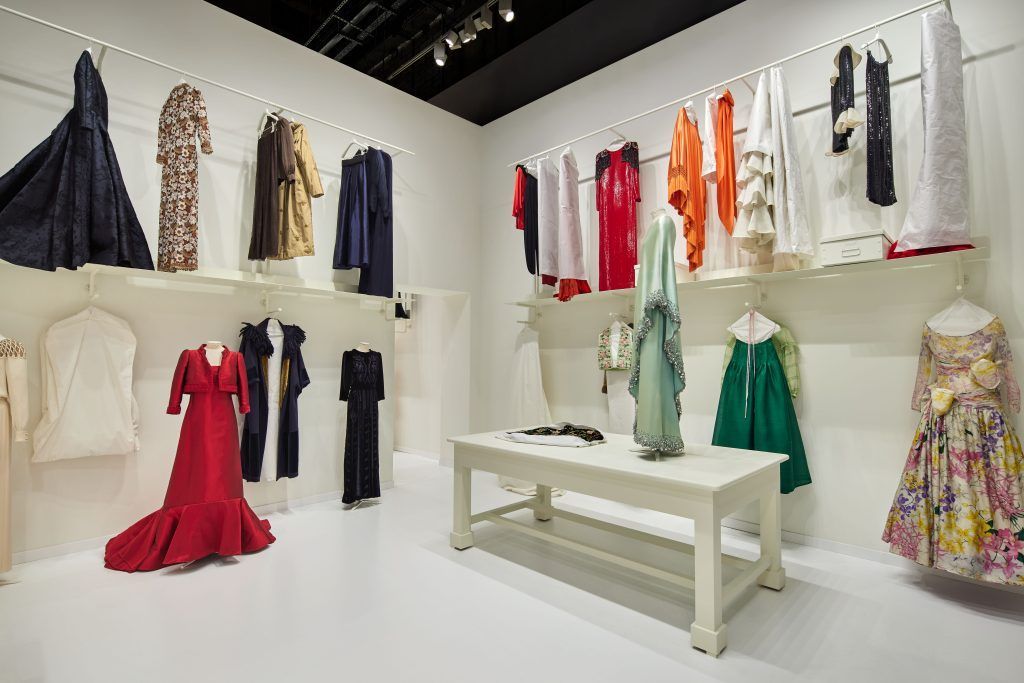
This ambitious anthology of dresses old and new doesn’t feel like a retrospective. Piccioli’s intention of looking forward and celebrating the timeless values of Valentino is clear in every stitch of every garment and each image placed in each room. Not one element is random, vague or obscure. As a dialogue between two creative colossi, Forever Valentino surprises with its intimacy as much as it thrills with its grandeur.

